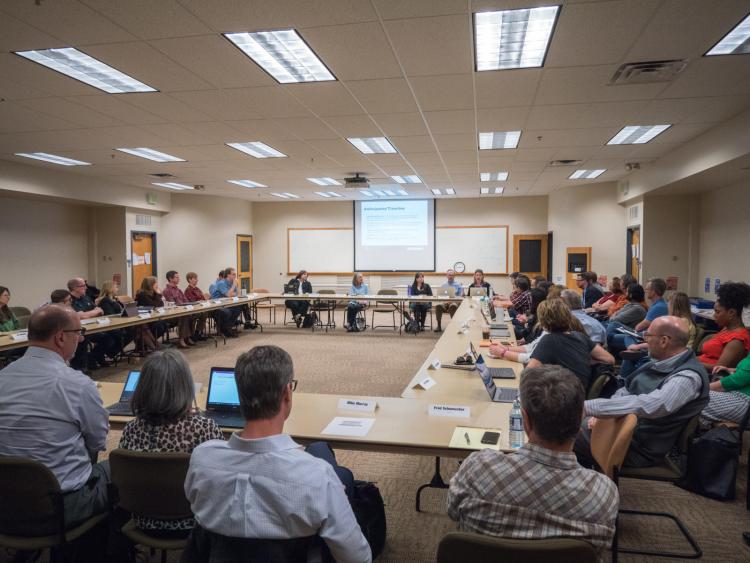Tips for efficient meetings

In-person, virtual or hybrid?
There are several things to consider when trying to schedule meetings around alternate work modalities and schedules. It can help to start by identifying which meetings would be beneficial to have in person. This might include team meetings or leadership meetings. With this, your team may want to establish a day where everyone is in the office at the same time to make it easier to schedule in-person meetings.
Some meetings may be easier to do virtually, like one-on-ones. And sometimes if schedules don’t align, a hybrid meeting may be an option. It is recommended that, when possible, meetings are either fully in person or fully remote. Keep in mind that a hybrid meeting makes it harder to create an inclusive environment for all meeting participants.
Considerations for hybrid meetings
If a hybrid meeting is your only option, keep in mind that it may require some additional considerations to help ensure all participants are engaged and contributing equally.
If you are scheduling a hybrid meeting, consider the needs of the remote participants first. It will be important to find a meeting room that can:
- Display the remote attendees on a screen.
- Allow remote attendees to hear the meeting clearly.
- Allow the remote attendees to see the meeting facilitator or speaker and other participants.
When possible, test your setup in advance to ensure audio and video components are working correctly. Departments may also want to establish hybrid meeting guidelines to ensure full participation. These could include:
- Creating a designated chat, perhaps in Microsoft Teams, to keep remote attendees engaged. This allows for comments, questions and learning, and may keep presenters from being disrupted.
- Starting each meeting by checking in with remote attendees on sound.
- Allowing all participants to have their phones or laptops and asking them to enable chat features so they can be part of the conversation.
Considerations for virtual meetings
Having a set of co-created meeting norms for your team can help meetings run smoothly. Additionally, they allow for a deeper sense of belonging and trust.
Examples of meeting norms include:
- Speaking from personal experience.
- Listening respectfully: listen and learn.
- Determining how the chat function and “raise hand” function will be used throughout the meeting.
For more tips, review this article about creating team norms and making them stick.
Take technology needs into account
Student Affairs staff have several options for scheduling hybrid and remote meetings:
- Microsoft Teams is great for meetings with a small number of participants (two to six people).
- Zoom is best for meetings with a large number of attendees, breakout rooms and presentations.
Whether meetings are in a hybrid format or held remotely, participants will need reliable Wi-Fi and network access. Review recommendations and resources for adjusting to hybrid work from CU Boulder’s Office of Information Technology.
As many of us adjust to returning to campus work, it can help to be flexible and adaptable with finding what works best for your team and goals.

